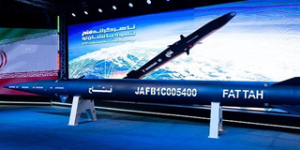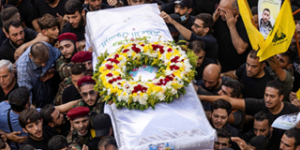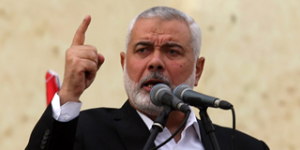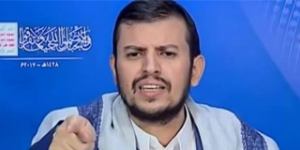Front Page
The Book
The Challenge of Iran
Robin Wright
Politics
Supreme Leader: Sadjadpour
Seven Presidents: Bakhash
Parliament: Farhi
Assembly of Experts: Farhi
Judiciary: Ghaemi
Clergy: Khalaji
Iran's Islam: Cole
Iran's Democracy: Brumberg
Military
Revolutionary Guards: Nader
Basij Force: Alfoneh
Conventional Military: Cordesman
Military Doctrine: Connell
Economy
Economy: Maloney
Oil Sector: Mohamedi
Oil & Gas Chart: Mohamedi
Subsidies: Nikou
The Bazaar: Harris
People and Power
Power Structure: Boroujerdi / Rahimkhani
Political Elite: Boroujerdi / Rahimkhani
Opposition
Green Movement: Milani
Women: Esfandiari
Youth: Memarian/Nesvaderani
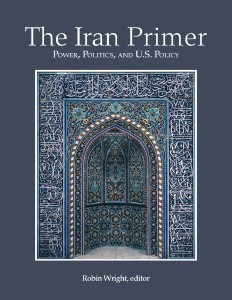
Nuclear Deals
2015 JCPOA Nuclear Deal
2015 Nuclear Framework
2013 Interim Nuclear Deal
Nuclear Program
Nuclear Program: Albright/Stricker
Nuclear Politics: Chubin
Ballistic Missiles: Elleman
The IAEA: Adler
Sanctions
U.S. Sanctions: Clawson
U.N. Resolutions: Starr
Financial Sanctions: Levitt
Sanctions-Details
U.S. Sanctions: Starr / Ighani
Rights Sanctions: Wright
U.N. Resolutions: Starr
Iran & the Region
Iraq: Eisenstadt
Afghanistan: Milani
The Gulf: Molavi
Turkey: Barkey
Israel: Simon
Palestinians: Brandenburg
Syria: Goodarzi
Lebanon: Hokayem
China: Park
Russia: Katz
European Union: Posch
Other Allies: Heydemann
U.S. - Iran
Carter Presidency: Sick
Reagan Presidency: Kemp
Bush I Presidency: Haass
Clinton Presidency: Riedel
Bush II Presidency: Hadley
Obama Presidency: Limbert
Trump Presidency
Policy Options
Reading Iran: Laipson
Engaging Iran: Dobbins
Diplomacy: DiMaggio
Containment: Pollack
Military Option: Zakheim
Timelines
Political Timeline: Nikou
Diplomatic Timeline: Nikou / Glenn / Nada
Military Timeline: Nikou
Nuclear Timeline: Nikou / Glenn / Nada
Nuclear sites: Nikou
Information sources: Nikou
About the Authors
Nuclear Deal 2015
Text, Reactions, Resources
"With courage, political will, mutual respect and leadership, we delivered on what the world was hoping for: a shared commitment to peace and to join hands in order to make our world safer. This is an historic day also because we are creating the conditions for building trust and opening a new chapter in our relationship.
"No one ever thought it would be easy. Historic decisions never are. But despite all twists and turns of the talks, and the number of extensions, hope and determination enabled us to overcome all the difficult moments. We have always been aware we had a responsibility to our generation and the future ones."
—Iranian Foreign Minister Mohammad Javad Zarif and E.U. foreign policy chief Federica Mogherini, in a statement on July 14, 2015
Click here for the full text of the nuclear deal.
Click here for analysis and reaction to the JCPOA.
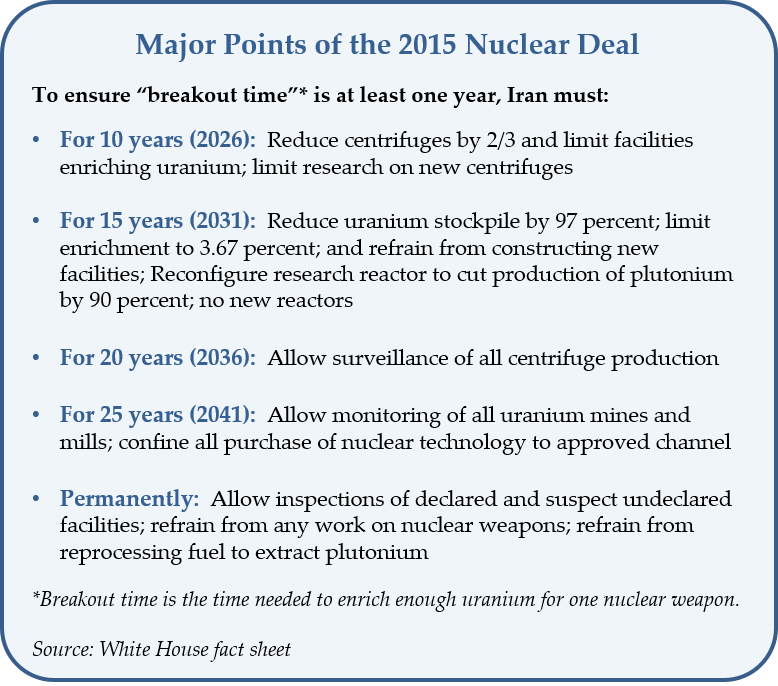
Iran Factbox
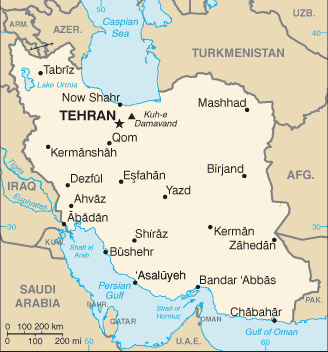
Land borders
-
Afghanistan - 585 miles
-
Armenia - 22 miles
-
Azerbaijan-Nakhchivan exclave - 112 miles
-
Azerbaijan - 270 miles
-
Iraq - 911 miles
-
Pakistan - 568 miles
-
Turkmenistan - 620 miles
-
Turkey - 312 miles
2021 population:
85.9 million
Religious divisions:
- Muslims 99.6%:
- Shiite 90-95%
- Sunni 5-10%
- Other significant minorities .3% (estimates vary):
- Baha'i - 300,000+
- Christians (mainly Assyrian and Armenian churches) - 117,000+
- Zoroastrians - 25,000
- Jews - 9,000+
Bordering bodies of water:
- Caspian Sea - 462 miles
- Persian Gulf and Gulf of Oman - 1,525 miles
Sources: CIA World Factbook (2022), U.S. State Department International Religious Freedom Report 2020
The Iran Primer
“The Iran Primer: Power, Politics and U.S. Policy” is an unprecedented project by 50 of the world’s top scholars on Iran representing some 20 foreign policy think tanks, eight universities, and senior foreign policy officials from six U.S. administrations. The book has no single political perspective or agenda, as the authors approach the subjects with a wide range of views.
They include scholars at the US Institute of Peace, Woodrow Wilson International Center for Scholars, the Council on Foreign Relations, Brookings Institution, Rand Corp, International Institute for Strategic Studies, Carnegie Endowment for International Peace, Asia Society, the Center for Strategic and International Studies, American Enterprise Institute, the Institute for Science and International Security, Washington Institute for Near East Policy, New America Foundation, Stimson Center, Center for Naval Analyses, Nixon Center, The Century Foundation, International and Foreign Policy Institute (Berlin), the Foreign Policy Research Institute, and several universities, including Stanford, Michigan, Columbia, Johns Hopkins, Georgetown, Syracuse, and the U.S. Naval Academy.
Two of the authors are former U.N. weapons inspectors. And the national security adviser or top National Security official in charge of Iran from six presidencies also contributed chapters on what happened between the United States and Iran during that administration.
The book is also a living website project, as the entire book is available free on the web. It will also be constantly updated. The goal is to provide information about the many complex sides of a country with which the United States has not had relations for more than three decades.
Rules for Republication
News media are welcome to republish original blog postings from this website in full, with a citation and link back to The Iran Primer website (www.iranprimer.com) as the original source. Any edits or change must be authorized by the author. Permission to reprint anything from The Iran Primer website or book should be directed to gnada@usip.org.

